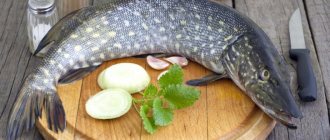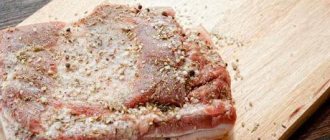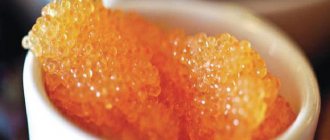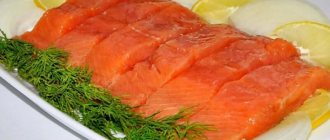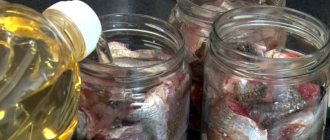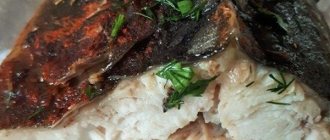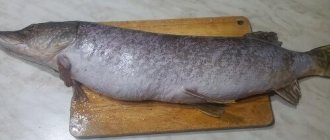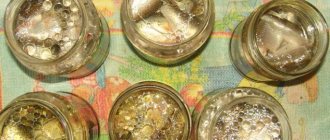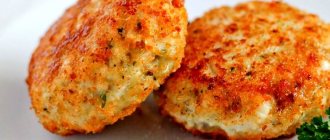Recipes for making molasses
Molasses (maltodextrin, dextrin maltose) is used in the canning and confectionery industries.
In particular, it is used in the manufacture of certain types of bread and gingerbread. Some of its types are used for the production of frozen desserts and ice cream in order to lower the freezing point of products. In the food industry, molasses is produced in two ways. The first method is to prepare it from starch (potato, corn) by saccharification (hydrolysis). In the second way, molasses is made from the juice of berries and vegetables (fruits containing large amounts of sugary substances). For this purpose, apples, pears, currants, gooseberries, grapes, etc. are used. All about sugar. Watch the video.
Fruit molasses
How to prepare fruit molasses:
Wash the berries or fruits and extract the juice using a juicer. Strain the juice through cheesecloth into a saucepan and simmer over low heat until it thickens.
Stir it occasionally with a wooden spatula. The finished molasses should have a dark yellow color.
Pomegranate molasses
It has a sour taste and a beautiful dark color. It can be used not only in baking, but also added to salad dressings.
How to make pomegranate molasses:
Pour the juice into a saucepan and place over low heat. When it boils, add sugar, stir and cook until the volume of liquid is reduced by four.
At the end of cooking, add lemon juice to the molasses.
Honey molasses
How to prepare honey molasses:
Mix all the ingredients in a saucepan and cook the mixture over low heat until the sugar melts. Bring it to a boil and let it cook for 5-7 minutes.
Remove molasses from heat and cool.
Golden syrup
How to prepare light molasses:
Place sugar in a bowl or saucepan, add water and place over low heat until the sugar dissolves.
Let the mixture simmer over low heat for 5 minutes.
All the secrets of honey. Watch the video!
Light lemon molasses
How to make light lemon molasses:
Boil water, add granulated sugar to it, bring to a boil. As soon as it boils, add citric acid, cover the pan with a lid and leave on low heat for 45 minutes.
Stir the molasses from time to time. Cool the finished product, add baking soda diluted with water in a small amount.
Stir the molasses thoroughly until it foams a lot. Foaming will stop after 15 minutes.
If foam remains, remove it from the surface with a spoon. Pour the molasses into a glass container and store it in the refrigerator or use it for baking.
Molasses for weight loss
Absolutely any diet that is used for weight loss implies a complete abstinence from eating sweet products. For most people, such a condition is practically impossible to fulfill, since the habit of drinking tea with sugar and eating sweet flour products has already been developed.
In order not to resort to radical measures, it is enough to find natural substitutes for granulated sugar that can satisfy taste needs and do not lead to the formation of fat deposits.
Molasses is used for weight loss as a substitute for regular granulated sugar, which is much higher in calories than maltose-based sweet syrup. The liquid product is added to desserts and baked goods to add sweetness to the product.
Keep in mind that it is recommended to use black molasses. It has a specific smell and taste, so this product cannot be eaten in large quantities, but it will completely satisfy the need for sweets.
Molasses can be called a universal product that not only improves the taste and aroma of baked goods and other sweets, but also promotes long-term storage of products, leaving the products soft, as if they had just come out of the oven. In addition, this syrup is very beneficial for the body due to the presence of vitamins and minerals in it.
Molasses - recipe
Molasses is a liquid sweet syrup that is often used in confectionery. The beauty and main difference between molasses and sugar is that the syrup does not crystallize and therefore products with it remain fresh and soft longer. In addition, baked goods prepared using molasses acquire a special taste.
You can’t buy this ingredient in every store, so it’s easier to prepare molasses at home.
How to prepare molasses?
- sugar – 350 g;
- water – 150 ml;
- citric acid – 2 g;
- baking soda – 1.5 g.
Boil water in a saucepan as it needs to be hot for the recipe. Dissolve sugar in it and, stirring constantly, bring to a boil. Then add citric acid to the syrup, cover the pan with a lid and cook over low heat for 45 minutes. Cool the finished syrup a little. Add a little water to the baking soda, stir, then transfer the mixture to the cooled liquid and mix everything again.
The mixture will begin to foam strongly, leave it to infuse for 10-15 minutes. Once the foaming has stopped, your molasses is ready to use. If a little foam remains on the surface, simply remove it with a spoon. The finished syrup can be stored in a glass container in the refrigerator.
Sweet molasses
Most often, molasses is made from brown or black sugar (molasses), which is why it is also called dark molasses. According to the recipe we have proposed, you will need no more than 10 minutes to prepare it.
- brown sugar or molasses - 5 tbsp. spoon;
- water – 1-2 tbsp. spoons.
Place brown sugar in a saucepan, add water and cook the syrup over low heat, stirring constantly, until the sugar has completely melted. After this, bring the liquid to a boil, let it simmer for 3-5 minutes and remove from heat. Leave the molasses to cool at room temperature and then use for baking.
Light molasses at home
Some recipes contain an ingredient such as light molasses, which, like dark molasses, can be prepared at home. We will tell you how to make light molasses, for which you will need regular white sugar instead of brown sugar.
- regular sugar - 7 tbsp. spoon;
- water – 3 tbsp. spoons.
Pour sugar into a saucepan or bowl, add water and heat until the sugar is completely dissolved. Place the syrup on the stove and let it simmer over low heat for about 5 minutes. Turn off the heat, let the syrup cool and then use as directed.
Honey molasses
Making honey molasses at home is not a big problem, and the syrup turns out quite thick and viscous.
- brown sugar - 3 tbsp. spoons;
- honey - 3 tbsp. spoons;
- water – 1 tbsp. spoon.
Combine all ingredients in a bowl and simmer over low heat until the sugar melts. Then bring the syrup to a boil and let it simmer for about 5-7 minutes. Remove the honey molasses from the heat and let it cool.
Where to buy and how to use molasses?
When demand for a particular product arises, supply also appears. That is why today molasses can be purchased in almost any fishing store (in the bait and bait department) or in stores that sell animal feed. It's even easier to purchase an activator online. Here you can get comprehensive information about the product, its properties and methods of use. You should not buy molasses “from hand”, because it is unknown what it was cooked from and what components it contains.

Carp fishermen call molasses a killer bait, and it truly deserves the name. The sweet, thick, dark liquid with a high content of amino acids, natural minerals and enzymes leaves no chance for the fish. It can be added to the base mixture, flavored ready-made baits, and used to create the desired consistency. In this case, it is not at all necessary to be precise in measurements; molasses can be added until the required viscosity of the bait mixture is obtained. The maximum dose is 500 ml per 6 kg of dry food. Excess may negatively affect fishing or, on the contrary, increase the bite, but it’s not worth the risk. Before adding molasses to bait, it is advisable to dissolve it in prepared water.
Molasses is a real boon for a fisherman. It always comes to the rescue on days when underwater inhabitants are capricious for some reason, feed little or generally behave passively. It is enough to add this delicacy to the bait and the fish immediately perks up, and fishing becomes interesting and productive.
Video on the topic:
What is molasses and how to use it for fishing [salapinru]
10:40
Reaction of fish to MELASSA BREAM! Fishing on Feeder with three underwater cameras
05:01
MELASSA bloodworm and semolina chatterbox! Fish reaction. Underwater photography
10:05
Molasses & bait (cook room)
11:33
narybalke
What is molasses
If you know how to make juice, you can easily cope with the preparation of molasses (maltodextrin and dextrin maltose). Molasses is a syrup product made when starch is saccharified. The process is called acid hydrolysis with filtration and boiling of the syrup. In the Caucasus, the sugary product was given the name musales. It is famous among culinary experts for its honey-sweet taste. The benefit of molasses is the content of microelements and B vitamins. The harm is due to increased sugar levels, so people with diabetes should not consume it.
Molasses: benefits and harms
From a medical point of view, the benefit of molasses lies in the content of some important microelements, for example, phosphorus, calcium, potassium, magnesium, sodium and iron. All of them are necessary in order to replenish the body's energy reserves. Molasses also contains B vitamins.
Its main harm, proven by experts, is individual intolerance to the product and its components. It is not recommended to abuse it by people with high blood sugar levels. By the way, those who are allergic to natural honey can replace it with molasses, because their appearance and taste are almost identical.
What kind of molasses is there?
Molasses - what is this additive? The by-product of sugar processing varies both in color and in the raw materials used in its production. There are two types of molasses known throughout the world: light and black. The first is made from starch, the second from beets and sugar. Types of starch for making light molasses:
- potato;
- corn;
- wheat;
- rye;
- barley;
- sorghum;
- tapioca.
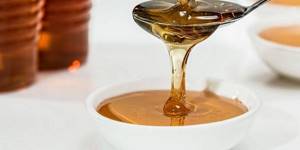
Starch syrup
Previously, employees of the Russian food industry produced the only type of starch syrup - caramel. Starch syrup is a type of light molasses. Today, starch syrup is divided into 4 types and they depend on the percentage of carbohydrates in it:
- glucose;
- maltose;
- highly sugared;
- low sugar.
Maltose molasses
If you saccharify raw materials containing starch (corn flour or barley malt) with enzymes, you get maltose syrup. It is used both in the production of bread and confectionery, as well as in the production of soft drinks and softening alcoholic drinks. Maltose molasses is valued for its characteristics: bright chocolate color, sweetness and slightly malty aroma.
Molasses
Molasses is a product of processing cane or beet sugar. Molasses gets its name from the Portuguese word “melaco” (honey). In terms of its properties, molasses is more like a food additive. It is like sugar, but with the largest amount of microelements. Homemade blackstrap molasses is used to make gingerbread cookies.
Caramel molasses
Sweet caramel molasses consists of glucose, maltose, maltotriose and other substances. Scope of application: food industry for regulating sugar crystallization processes. Often added to childhood candies and caramels - toffee.
Characteristics of caramel molasses:
- viscosity;
- harmonious combination with milk protein - you get excellent taste and color;
- adding to treats with a high content of dry ingredients prolongs their taste for a long time;
- regulates the crystallization of lactose in milk.
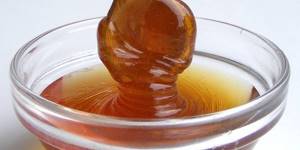
Corn syrup
Corn sweetener (100 grams) contains 316 kcal. Corn starch molasses is popularly added to jelly candies, marmalade, and fillings because of its ability to caramelize. Corn starch is inexpensive, which reduces the cost of preparing confectionery products.
Characteristics of corn syrup:
- lowers the freezing point of the product;
- makes the shelf life longer.
Beet molasses
A waste product from sugar production, black molasses, was produced using technology invented back in the 6th century in France. The scientist's name was Olivier de Serra. Recommendations for the proper use of sugar beets were found only in 1747. But the use of beet molasses began to gain momentum only in 1800. The sugar product is excellent for coloring sugar cubes and is used in cooking and alcohol production (Hong Thong whiskey).
Ingredients for making half a jar of beet molasses:
- beets – 1 pc.;
- water – ½ tbsp;
- sugar – 6-7 tbsp. l.
- Extract juice from beets using a juicer.
- Place the saucepan with the juice on the stove and add sugar.
- Cook over low heat until desired thickening.
If you look at the photo of beet molasses, then after cooking it should:
- look like liquid syrup;
- have a dark brown tint;
- taste like burnt sugar.
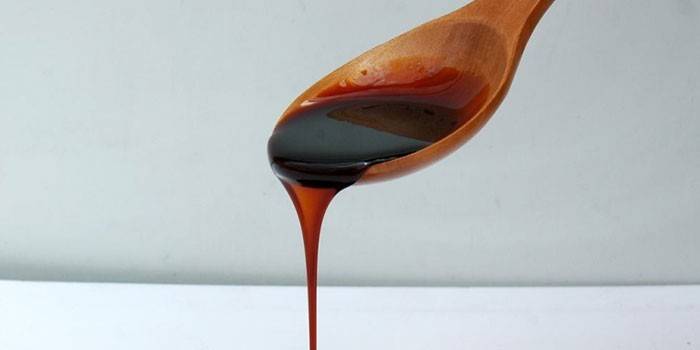
White molasses
This sweetener acquired its name thanks to refined sugar, which serves as a raw material in its production. There are subtypes of white molasses that are made from corn, potato and other starches. White is one of the two most famous types of sugary product. White molasses is best used for making all kinds of syrups.
Ingredients for white (refined) sweetener:
- refined sugar – 350 g;
- water – 150 ml;
- citric acid – 2 g;
- baking soda – 1.5 g.
- Bring a pan of water to a boil and add refined sugar, let it dissolve.
- When it boils again, add acid and cover with a lid.
- Leave to simmer for 45 minutes and turn off.
- When the mixture has cooled, add diluted soda.
- Ready for use in a quarter of an hour, when the foam subsides.
Cane molasses
This molasses is formed during the production of cane sugar as a by-product. Whether its color will be dark brown or a little lighter depends on the quality of the raw material - reed. Mainly because of its properties, cane molasses is used in moonshine factories, and in cooking - in the preparation of fruit syrups (melon, watermelon, grape, etc.)
How cane molasses is made:
- Peeled sugar cane is crushed and the juice is squeezed out, which is then sent for crystallization.
- The result is sugar crystals and a liquid residue - light molasses. It also contains a huge amount of sugar.
- Next, water is added and processed again.
- Another crystallization occurs and the secondary residue becomes dark in color.
Characteristics of cane molasses:
- viscous;
- syrupy liquid;
- peculiar smell;
- bittersweet taste;
- rich in fructose and glucose.
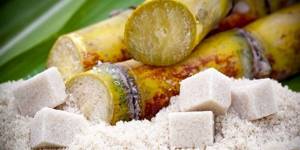
Varieties of molasses
Molasses, as a secondary product of sugar production, differs not only in color - black and light. Its type directly depends on the production raw materials. When processing sugar cane or beets, black molasses (beet molasses) is obtained. Light syrup is made from starchy products. There are several varieties of the latter:
- wheat;
- barley;
- corn;
- rye;
- potato;
- tapioca;
- sorghum
Nowadays you can find maltose, glucose, high-sugar or low-sugar molasses on sale.
Caramel
The most popular used in the culinary industry. Caramel molasses is the first type of light starch molasses that began to be produced in the Russian food industry. It consists of more than 50% polysaccharides. It also contains a small amount of maltose and glucose. In appearance it is a viscous, transparent, sometimes yellowish liquid. It is produced mainly from barley malt or corn. The scope of application in cooking is wide - candies, ice cream, creams and glazes, gingerbread cookies, desserts, lollipops. It is also used in alcohol production.
Advantages of this variety:
- regulation of the process of formation of sugar crystals;
- preserving the taste of products for a long time;
- combination with milk protein gives the product a wonderful color and taste.
Maltose
Its main component is maltose, the glucose content in it is no more than 10%. It comes in 2 colors - black and light . The first is used in baking white bread and buns, the second - in the preparation of gingerbread, cookies and some types of sweets. Light maltose syrup has a viscous transparent liquid consistency.
Black - has a brown tint and lower density. Its use in baking production helps prevent the rapid staleness of bread and increases the fluffiness of the product. Before replacing maltose molasses, you need to inquire about the percentage of glucose in the substitute product. It should be close to maltose.
Highly sugared and low sugared
Highly sugared molasses is a product with a high sugar content; it contains more than 40% glucose. It found application in baking biscuits and varieties of black custard bread. It is also used in canning and production of ice cream, ketchup, sauces, jams and beer.
The presence of glucose in low-sugar syrup does not exceed 8%. It has a very viscous consistency. Its properties allow the product to keep its shape and prevent crystallization of sucrose. It is used not only in the confectionery business, but also in the construction and metallurgical industries.
Thus, in industrial culinary production, almost all confectionery products and bread are prepared with the addition of molasses.
- It adds sweetness, interesting color and taste.
- Molasses carbohydrates are better absorbed by the body.
- The cost of producing products with natural sweeteners is noticeably lower.
- The shelf life of products increases.
Molasses
Molasses differs from previous types of molasses in the method of its production (from beets and cane), syrupy mass and peculiar smell. Black molasses is used as syrup in cooking, and also as a natural sweetener, rich in vitamins, microelements and inorganic calcium.
What is molasses in cooking?
The taste of a dish and its appearance depend on the ingredients added to it. Sweetener and sweetener are synonyms for molasses, which explain its use in cooking. In small doses it is added to change the color of the dish, and in large doses for taste preferences. The additive is used in various areas of cooking due to its advantages over sugar:
- the carbohydrate composition of molasses is easily digestible;
- lowers the freezing point of the product;
- increases shelf life;
- reduces production costs;
- improves the solubility of sucrose;
- protects products from crystallization.
List of uses of sugar by-product in the food industry:
- confectionery sweets, cookies, marshmallows, gingerbreads;
- jam, marmalade, caramel, marshmallow, jam, jelly;
- many types of bread;
- canned food;
- bakery;
- syrups for desserts;
- ice cream;
- brewing;
- sports and dietary nutrition;
- sauces.
What it is?
The product is a semi-finished product that can be considered a by-product of the starch and sugar production process. It looks like a semi-liquid mass, the consistency is a little like fresh honey.
This syrup is widely used for preparing various products, since sweet molasses can easily replace sugar and honey. Mainly used on an industrial scale in the production of bread: rye, Karelian and some others, gingerbread, sauces, sweets, beer. When added, it imparts flavor and a characteristic brownish color to the finished product. In addition, sugar molasses increases viscosity, making the finished baked goods more dense and porous.
The composition of molasses is as follows - in fact, the product is a mixture of three components dissolved in water: glucose, dextrin, oligosaccharides. Only starch syrup is obtained as a by-product. The remaining types of this sweet transparent syrup are made specifically for further use in the food industry.
LiveInternetLiveInternet
—Categories
- *** Holidays (266)
- new year (121)
- wedding (40)
- church (26)
- 10% (0)
- *** SPA (336)
- hair (48)
- sets of exercises (43)
- makeup (37)
- legs (15)
- nails, manicure (65)
- perfume and scents (22)
- industrial gymnastics (35)
- hands (2)
- facial exercises (8)
- self care (57)
- *** AUDIO BOOKS (742)
- detective (260)
- historical (66)
- children's (74)
- classic (29)
- memoirs (67)
- book search (27)
- novels (132)
- funny (30)
- fantasy (89)
- ***LAWYER and BUSINESS advice (98)
- *** VIRTUAL TOURS (1855)
- Japan (324)
- public institutions - hospitals, etc. (143)
- Nizhny Novgorod - Gorky (88)
- Poland (32)
- webcams (24)
- the world through the eyes of Russians / foreigners (350)
- museums (157)
- unusual show performances (43)
- 3D - panoramas (212)
- good to know! (102)
- sanatoriums and recreation (21)
- flash mob (22)
- time-lapse photography, time lapse (81)
- excursions (332)
- *** EVERYTHING FOR THE BLOG (489)
- calendars (7)
- funny flash drives (57)
- info on diary settings (37)
- informers (15)
- Google map (4)
- buttons and formulas (39)
- translator (9)
- dividers (33)
- frames (73)
- diagrams and avatars (107)
- table (8)
- text (20)
- backgrounds (12)
- watch (23)
- *** FOR CHILDREN (684)
- poems, songs, riddles (109)
- school (54)
- games - flash drives (40)
- kaleidoscope (3)
- speech therapist (4)
- experiments and educational games (87)
- puzzles (3)
- DIY crafts (178)
- drawing and coloring (74)
- children's websites (22)
- advice from a psychologist (107)
- *** HOUSE (831)
- 3D programs (5)
- balconies, loggias (13)
- bathroom (35)
- living room (3)
- children's (5)
- repair ideas and mistakes (60)
- beautiful and unusual houses (269)
- kitchen (59)
- hallway (4)
- repair - alteration (46)
- bedroom (22)
- house and plot near the house (89)
- farming (219)
- *** ANIMAL LIFE (256)
- cats (133)
- aquariums (15)
- turtles (6)
- *** HISTORY (1507)
- Russian soldiers (145)
- Asia (99)
- Clothing and life (62)
- Africa (36)
- America (95)
- Europe (398)
- history reconstruction (120)
- Russia (553)
- *** PICTURES - PHOTOS (1074)
- pictures gif (93)
- photos for pleasure (33)
- beautiful places (189)
- beautiful photos (77)
- old photos and videos (226)
- artists (407)
- *** CINEMA HALL (1643)
- detective (158)
- children's (59)
- documentaries (234)
- comedies (223)
- BBC melodramas and other costume dramas (184)
- musical (47)
- cartoons (121)
- about life and love (147)
- by actors (103)
- based on real events (42)
- search filmof-f (18)
- adventure (23)
- dancing (75)
- theater (177)
- TV program (4)
- fantasy (72)
- circus (9)
- *** BOOKS (345)
- online libraries (29)
- *** COMPUTER (150)
- tablet (37)
- *** PERSONAL (90)
- *** MEDICINE (664)
- the world through the eyes of a pensioner/disabled person (40)
- children (38)
- diabetes (51)
- vision (5)
- music and other ways - relaxation (107)
- smoking and alcohol (12)
- medicines and folk remedies (36)
- medical news (40)
- spine (55)
- help yourself (172)
- lose weight! (108)
- *** MAN'S WORLD and politics (640)
- *** MUSIC (599)
- 80 - 90's (52)
- 30 - 50's (35)
- 60 - 70's (11)
- fm - radio and music search (16)
- karaoke (13)
- concerts (32)
- opera (58)
- romances and folk songs (130)
- 2000s (100)
- *** PSYCHOLOGY (727)
- =circle of goodness in nature= (159)
- deir (14)
- man and woman (268)
- NLP (20)
- simoron (70)
- equipment (120)
- eniology (18)
- this is useful to know ! (63)
- *** RELIGION (188)
- saints (39)
- articles and films about faith (81)
- churches and monasteries (54)
- *** RECIPES (1520)
- baked goods - cookies, buns, gingerbreads (96)
- vegetable dishes (84)
- fish and seafood (47)
- alcoholic drinks (96)
- no bake (30)
- soft drinks (54)
- baking - molding and dough (82)
- baked goods - not sweet (131)
- baked goods - sweet (158)
- oven - grill (28)
- desserts and sweets (111)
- jelly, aspic, jellied meat (15)
- preparations for the winter (67)
- cuisines of the world (98)
- pasta, noodles, cereals (16)
- microwave (49)
- multicooker (34)
- meat, poultry (77)
- frying and deep frying (40)
- steamer (1)
- dumplings, dumplings, manti (25)
- spices (12)
- websites, books and magazines on cooking (20)
- salads and snacks (83)
- special menu (71)
- soups (18)
- cheese, cottage cheese, dairy (33)
- baked goods - cakes (68)
- fruit (21)
- bread machine (44)
- ***HANDWORK (1028)
- doll houses (100)
- stained glass (12)
- knitting (324)
- decoupage (16)
- carpet needle (13)
- soap (17)
- drawing (55)
- handicraft corner (132)
- websites and books on handicrafts (14)
- earrings and other jewelry (37)
- slippers (59)
- tildes and other dolls (14)
- take pictures ourselves (33)
- embroidery (169)
- *** GARDENING (284)
- country ideas (18)
- parks and gardens (67)
- websites, books and magazines on gardening (5)
- growing technologies (89)
- flowers in the garden (42)
- *** POEMS (235)
- *** TESTS AND DIVINATIONS (166)
- *** LEARNING LANGUAGES (62)
- learn English (35)
- *** FLOWERS (358)
- botanical gardens and greenhouses (21)
- vertical garden (24)
- pests (7)
- plant catalog (124)
- books and websites about flowers (18)
- orchids (78)
- flower care (42)
- citruses (28)
- *** SEWING (549)
- patterns - for children (82)
- patterns - for women (158)
- patterns - for men (14)
- find your style. (95)
- pillows (9)
- bags (9)
- Size correspondence tables (6)
- sewing technologies (81)
- color wheel: (16)
- sewing for home (56)
- curtains (34)
- *** THIS IS INTERESTING (132)
- *** HUMOR (731)
- jokes (133)
- funny pictures! (212)
- funny video (119)
- funny stories (247)
Starch saccharification
Dry starch - 50 kg Sulfuric acid (90%) - 1.2 kg Water - 100 l
For cooking, they used to use a red copper cauldron, tinned inside with pure tin, or an iron cauldron lined with lead. It’s even better if the reactor is enameled or (for a small volume) glass, quartz or fluoroplastic.
The volume of the boiler (or reactor) must be such that the liquid occupies 2/3 of its volume. Sulfuric acid must not contain harmful impurities (for example, arsenic). Handle sulfuric acid with care: when diluting, pour sulfuric acid into water (and not vice versa). When preparing solid sugar, a larger amount of sulfuric acid is required (up to 2 kg).
The saccharification procedure itself is carried out by boiling starch “milk” (a suspension of starch in water) with sulfuric acid. Dilute sulfuric acid in 1/3 of the total amount of water, pour it into the boiler and bring to a boil. The remaining amount of water is used to mix the starch into the so-called starch milk. Next, starch milk is poured into the cauldron while stirring with a spatula in small portions and in a thin stream. When “milk” is added, the boiling stops, then the pouring is stopped and the liquid is brought to a boil again. only after this the rest of the “milk” is added. You need to make sure that there are no clots or paste.
We suggest you familiarize yourself with How to properly plant green (vegetating) grape seedlings | Do it yourself - How to do it yourself
After pouring is completed, the mass is boiled for another one and a half to two hours, and the moment of completion of saccharification is determined by testing for the content of starch and iodine. For this purpose, take a portion of liquid from the cauldron with a spoon, pour it into a test tube or on a saucer, cool and add 1-2 drops of iodine tincture. At the beginning of the process, a blue color is obtained (starch), then as the starch is saccharified, it is replaced by purple, orange and finally yellow (all starch has turned into sugars and dextrin).
To establish that all the dextrin has also passed into sugar, a test is done with alcohol. To do this, take a sample of a transparent filtered solution into a test tube or glass, add a 10-fold volume of 96% ethyl alcohol. If a precipitate forms, you need to continue heating; if there is no precipitate, this means that all the dextrin has turned into sugar and you need to cool the solution.
Molasses - recipes and preparation
Making molasses at home is not difficult; it is more difficult to buy it in a store.
Prepare molasses from granulated sugar, this is the main ingredient.
Molasses is used to prepare confectionery products.
I bring to your attention recipes for making molasses.
Recipe No. 1
- granulated sugar – 350 g;
- water – 150 ml;
- citric acid – 2 g;
- baking soda – 1.5 g;
How to prepare molasses:
- To prepare molasses, you need to boil water, dissolve granulated sugar in water, and bring the syrup to a boil. As soon as it boils, add citric acid, cover the pan with a lid and boil everything for 45 minutes.
- After some time, the molasses is ready; you need to cool it a little and add baking soda diluted with a small amount of water. The molasses must be mixed thoroughly; it will begin to foam strongly. The molasses will be ready after 15 minutes, as soon as the foaming stops.
- If foam remains on the surface, it must be removed with a spoon. The molasses can be poured into a glass container and stored in the refrigerator.
Recipe #2: Brown Molasses
- brown sugar – 5 tbsp. l.;
- water – 1-2 tbsp. l.;
How to make brown molasses:
- I put a small saucepan on the fire, pour in brown sugar and add water, stirring until the sugar dissolves. The molasses must be stirred constantly so that it does not burn.
- I boil the molasses for 3-5 minutes, remove from the heat and leave to cool. After the molasses has cooled, it can be used to add to gingerbread or shortcakes.
Recipe No. 3: Honey Molasses
- brown sugar - 3 tbsp. l.;
- honey - 3 tbsp. l.;
- water – 1 tbsp. l.;
How to make honey molasses:
- I place all the ingredients in a saucepan and start cooking over low heat until the sugar dissolves.
- I boil the molasses for 5-7 minutes and cool them at room temperature, the molasses will turn out very thick and viscous.
Recipe No. 4: Light Molasses
- granulated sugar – 7 tbsp. l.;
- water – 3 tbsp. l.;
How to make light molasses:
- Pour granulated sugar into a saucepan, add water and place on low heat until the granulated sugar is completely dissolved.
- I boil the syrup over low heat for 5 minutes, remove the syrup from the heat, cool and use it for baking.
Recipe No. 5: Grape molasses
- grapes – 500 g;
How to make grape molasses:
- I squeeze the juice out of ripe grapes; for this you can use gauze, put the grapes in it, and simply squeeze the juice into the pan.
- I put the pan on low heat and boil until the molasses becomes thick, while the grape molasses must be stirred constantly to avoid burning. The finished molasses should be dark yellow in color.
Preparation:
- Boil water in a saucepan.
- Then you need to dissolve the sugar in it and, stirring constantly, bring to a boil.
- Now you should add citric acid, cover the pan with a lid and cook over low heat for 45 minutes.
- The finished syrup needs to be cooled slightly.
- Mix baking soda with a little water, place the resulting mixture in the syrup and mix everything well again.
- After this, the mass will foam a lot; it should be left to infuse for 15 minutes.
- After the mixture stops foaming, the molasses is ready for use.
- If there is foam left on the surface, you just need to remove it with a spoon.
- Store the finished molasses in the refrigerator in a glass container.
Recipes with molasses
Molasses has found wide application in the food industry. The product is used in confectionery - creams and impregnations for cakes and pastries are made from it. Factories producing candies and other sweets use molasses instead of sugar.
First of all, bird's milk should be included in molasses recipes .
You can use molasses to soak muffins and biscuits. Molasses also plays a role in making cakes, and you can reduce the use of sugar in the original recipe.
Molasses: composition
Molasses is a mixture of glucose, dextrins and oligosaccharides dissolved in water; its dry matter content reaches almost 80 percent. Pure molasses is almost colorless and transparent. It has the ability to increase the solubility of sucrose by delaying its crystallization, which is the main reason for its widespread use in cooking.
Beet molasses or molasses is a waste product from beet sugar production and contains sucrose - approximately 50 percent, as well as some impurities that make it unsuitable for food use. It is used as a raw material in yeast and alcohol factories to produce yeast and alcohol.
The sugars in molasses consist of equal parts fructose and glucose.
Cooking delicious molasses
Molasses is a sugar syrup that is widely used in the confectionery industry. When making gingerbread, it adds the necessary viscosity to the dough, and when baking bread, it adds aroma and a special color. Buying molasses can sometimes be problematic, since it can only be found in large stores or special confectionery shops. It's easier to learn how to cook it at home.
Text: Elena Shchukina · February 8, 2014
The consistency of molasses is similar to honey, but its color will depend on what products it is made from. If you use white sugar, which is familiar to us, you will get a light product. Dark molasses is formed from brown or black sugar, commonly called molasses. You can make sugar syrup from honey or fruit.
Is molasses good for you?
When using molasses, the benefits and harms of this product must be taken into account, since syrup cannot be used for certain diseases, including diabetes. Full list of contraindications:
- obesity or excessive body weight;
- diabetes mellitus type 1 or 2;
- allergy to components of glucose syrup;
- individual intolerance.
However, confectionery syrup also has beneficial properties. These include:
- improvement of well-being during menopause in women;
- complex therapy of ulcers and other gastrointestinal diseases;
- to improve the functioning of the nervous system and brain;
- to saturate the body with calcium and iron;
- to stimulate the activity of the cardiovascular system thanks to potassium and magnesium.
In addition, regular or fruit is not in vain used in the production of confectionery and bread. Potato dough becomes more porous, elastic, and it gives gingerbread a characteristic shade and flavor. Without it, it is impossible to prepare some types of confectionery products, for example, marmalade, soft toffee, marshmallows, marshmallows, and some types of sweets. Starch, caramel and other molasses are widely used in the production of biscuits, where it acts as a leavening agent and gives the dough viscosity and juiciness. Any variety increases the moisture-holding characteristics of baked goods, slows down their hardening and allows the product to remain soft longer.
Dark and light molasses: recipes
Depending on the amount of product required at the output, the required ingredients can be calculated in a ratio of 7:3. So, you will need: - 7 tbsp. l. Sahara; - 3 tbsp. l. hot water.
Mix these ingredients in a bowl and wait until the sugar is completely dissolved. Place the syrup on the stove and simmer it over low heat for 3-5 minutes. Prepared light molasses can be used for its intended purpose after it has completely cooled.
Using a similar technology, you can prepare sugar syrup and using honey, you will get a dark version of molasses. To do this, in addition to the main product, you need to add brown sugar and water to the bowl. The proportion in this case will be 3:3:1 - three servings of honey and sugar per serving of water. Preparation is similar to the previous recipe.
What are the differences between the processes of processing starch into molasses?
Obtaining a product from the starch of potato tubers is one of the most common methods in Russia, due to the availability of this vegetable.
The processes for processing starch into molasses may differ in the following:
- Use of various substances (acid or enzymes) in the hydrolysis process.
- Differences in hydrolysis schemes. Since 2003, patents have been registered that use the latest technologies and chemical reactions to obtain the desired result by reducing time.
The processes for obtaining a product differ in small nuances, well thought out and aimed at doing it quickly and efficiently.
Useful properties of grain molasses
Easily digestible sugars are an important part of the diet of cattle and other domestic animals. Grain molasses is one of the affordable and high-quality products that solve this problem. Unlike root and tuber crops, it is inexpensive, easily stored and does not require such high costs as their cultivation.
The optimal production method is considered to be cavitation of cereals. This means that the grains are immersed in three times the volume of water and processed in a cavitation disperser. Then the cereals are crushed and disinfected. Next, the product is heated and hydrolysis of easily digestible sugars occurs. Compared to enzymatic technology, this method is simpler as it requires less preparation. In addition, cavitation technology supports the principle of natural hydrolysis.
We invite you to familiarize yourself with Do-it-yourself house siding
Enriching the livestock diet with grain molasses helps to increase milk yield and improve body weight gain. The product increases the efficiency of food absorption, helps strengthen the immune system, and reduce the negative impact of stress factors. An additional benefit is reduced veterinary costs.
Fruit molasses: national characteristics of preparation
In different countries, depending on what fruits are used in the production of molasses, it is called differently. So, in Turkey, pekmez is made from grapes, mulberries and carob. In Crimea, grape, apricot and date molasses are called bekmez if it is thick, and ekshi if it is thinner. Of course, sugar syrup can be made from other fruits and berries, the main thing is that they must be juicy.
It is worth considering that fruits are boiled down 10 times: 10 kg of grapes will yield 1 liter of pekmez
For 1 glass of fruit molasses you will need: - 2 kg of fruits or berries; - 0.5 liters of water.
Squeeze juice from well-washed fruits or berries. Place the remaining pulp in a bag and press down with heavy pressure. This is done in order to squeeze out the remaining juice. Strain the fruit mixture through a sieve, pour into a saucepan and cook over low heat. Stir the juice periodically with a wooden spatula. You need to cook the molasses until it darkens and has a thick consistency.
In addition to being used in cooking and baking, pekmez is also used in regular food. Molasses is added to yogurt, porridge, and poured over sandwiches. In addition, black grape pekmez increases hemoglobin well. Doctors recommend giving it even to eight-month-old babies.
Molasses is a secondary product of processing corn, sugar beets or cane to produce granulated sugar. Many people underestimate molasses as a product. Nevertheless, not a single confectionery or bakery production can do without it. Often molasses is required even for making homemade baked goods, not to mention on an industrial scale.
But not everyone knows where molasses is used, what it is and how it is obtained. The following describes the main types of molasses, and briefly the technology of its production.
Molasses
It is very difficult to find this type of molasses for sale in post-Soviet countries. There is technology for obtaining this product at home. To do this you will need 1 medium beet, 6-8 tablespoons of sugar and 100-150 ml of water.
First you need to drive the root vegetable through a juicer, and mix the resulting liquid with sugar and put it on the stove to boil. With constant stirring over low heat, it will gradually thicken. Stop cooking when the product reaches the required consistency. Ready beet molasses is dark brown in color, similar to liquid syrup and smells like burnt sugar.
How to make molasses
In the section Desserts, Sweets, Baking, the question is how to make molasses at home? asked by the author of Eurovision, the best answer is Generally, there are 2 ways to prepare molasses and sugar: 1) You can use oil of vitriol and turn any starch into sugar.
In this case, it does not matter what kind of starch is taken - potato, wheat or some other. All the same, any starch will produce sugar syrup or molasses of the same quality. 2) Molasses is also obtained by boiling the juice of berries, vegetables or fruits that contain a lot of sugary substances. In both cases, molasses is initially obtained, that is, a thick juice-syrup, and only then craftsmen extract sugar from the molasses. According to the first method, molasses is most often obtained from potato starch, because it is cheaper than others and is pure enough to produce molasses without an unpleasant aftertaste. You shouldn’t focus on potato; you can use the same method to prepare molasses from other types of starch. As for the second method, molasses can be prepared from various fruits and berries. Thus, the production of raw materials from apples and pears in the Crimea prepares two types of molasses: 1. ekshi - the most liquid molasses; 2. bekmez - thicker. So there is another type of molasses that is made from grapes in the Caucasus - musales. Finally, molasses can be made from all kinds of juicy berries. Particularly suitable for this are: currants, gooseberries, cloudberries and others. Fruit molasses is prepared as follows: - ripe fruits or berries are crushed in a large container as finely as possible; - the resulting mass is put into a bag and placed under a press or otherwise squeezed out all the juice; — to the juice it is necessary to add freshly slaked lime dissolved in water in such an amount that all the acid disappears from the juice. It is better to do this in the evening and leave the juice and lime until the morning. In the morning, carefully drain the clear juice from the sediment, which should not have any traces of acid; - the juice is filtered through cheesecloth, poured into a boiling container and boiled for 3-6 hours over low heat, skimming off the foam. During boiling, the juice is filtered another 2-3 times through bone char to remove any turbidity. I mean, of course, each time the boiling has to be interrupted for a short time.
If you boil the juice 2-3 times, that is, so that out of 3 bottles of juice there are 1-1.5 bottles left, you will get a liquid syrup - ekshi, which can be used for making berry jams. If you boil the juice 4-5 times, you get thick brown molasses - bekmez, which can replace sugar and is well preserved in barrels. By the way, pear bekmez is tastier and more valuable than apple bekmez. Source: 22oa.ru
What is Molasses bait?
Molasses bait is presented in the form of a sweetish brown syrup, which occurs as a result of sugar production.
It has a specific odor and includes the following ingredients:
- about a quarter of the composition is water;
- ten percent - nitrogen and its compounds;
- more than half of the composition is carbohydrates;
- a tenth is ash.
Peculiarities
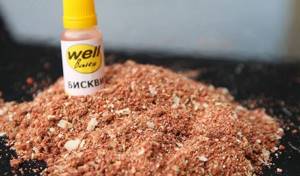
A composition such as molasses has interesting taste and aroma properties. Sometimes it is also called “feed molasses.” In some areas of North America, this product is used as a food additive, including for the preparation of a variety of dishes in the form of syrup. Due to the concentration of beneficial ingredients in molasses, it can be used as a sweetener.
This product has not been deprived of attention by vegetarians, who really like that it consists exclusively of vegetable crops. Please note that this also contains calcium. Moreover, it contains a lot of vitamins. In most European countries and the Russian Federation, molasses is used as a food product for livestock.
Advantages
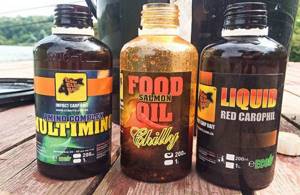
- molasses contains a huge amount of simple amino acids and betaine, which are considered one of the most essential elements for any living organism, including fish;
- the presence of carbohydrates in the composition determines its significant nutritional value, which allows you to saturate aquatic inhabitants in the shortest possible time;
- ash acts as a powerful laxative for fish, which works flawlessly. During the feeding process, the fish immediately empties until its body is saturated. Therefore, the appetite does not go away;
- Another advantage of the liquid is its good dissolution in cold water. For example, for catching bream under ice, this is the only effective option for luring fish;
- this component can be used to produce both dry and liquid complementary foods.
